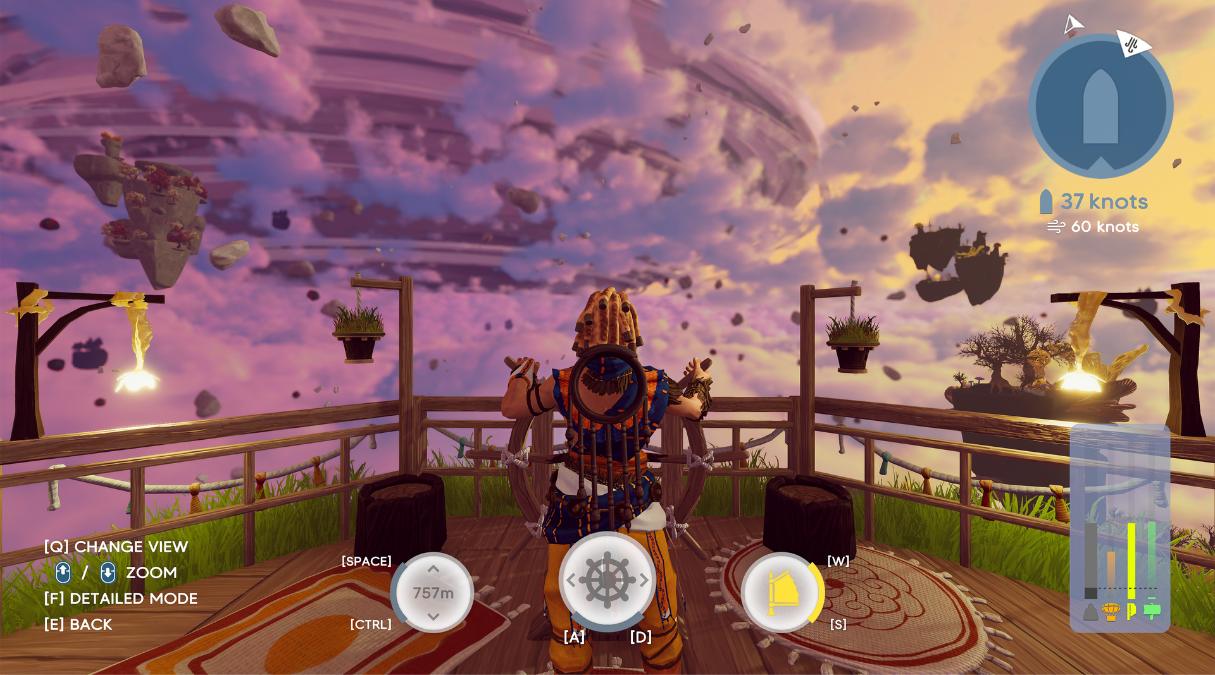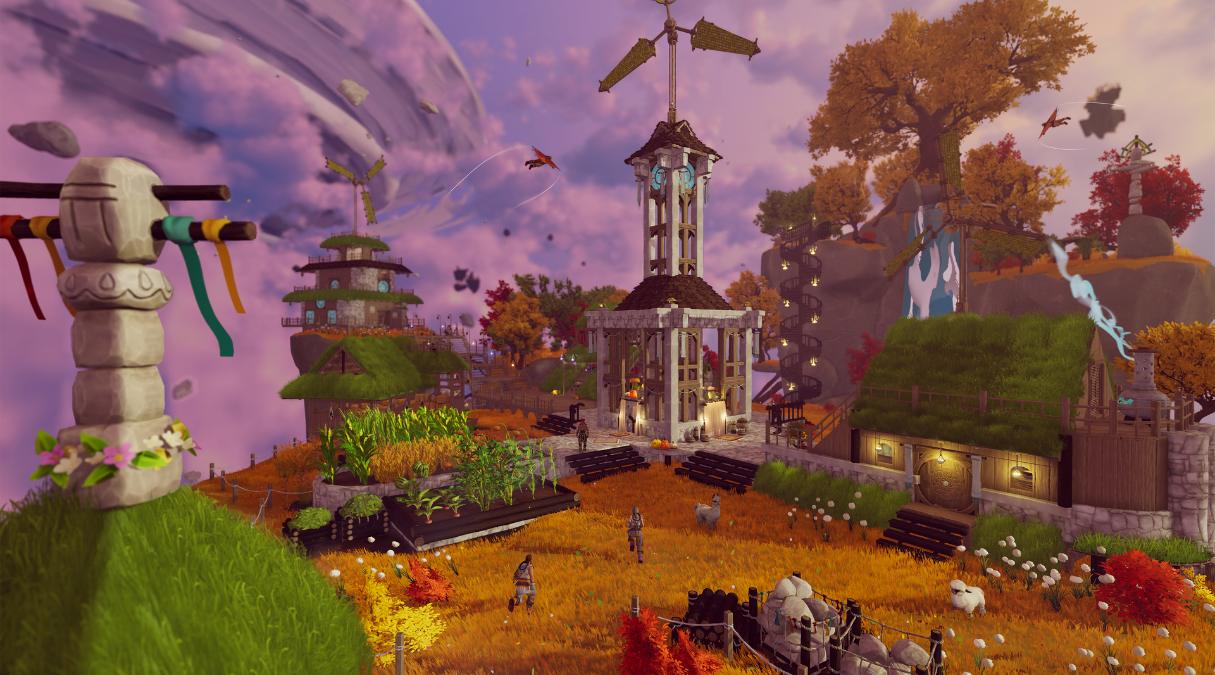Aloft is best experienced in co-op. While solo play is possible, the attention that tending to your skyship requires is easier if you have one person steering and the others repairing broken sails. Developed by Astrolabe Interactive and published by Funcom, Aloft co-op uses survival elements in a large, cozy sandbox that rewards exploration.
The game allows for up to eight-person co-op, with each multiplayer session hosted locally by the player who initiates the session. While other players can bring their islands into these sessions, you can only share resources and change each others’ islands if you have been given “trusted” status. Being “trusted” requires the skyship owner to grant permission to the player on their home island, which must be done across all home islands spawned into a new world for a co-op session. Aloft co-op makes it so that you can always play together in the same world, but working together with others in the host’s session requires one step to happen.
These permissions are reset every session and have to be granted again each time one begins. Once you have the permissions, it’s clear that player freedom is at the center of Aloft co-op. And with the world not being accessible when the host player logs off, Aloft co-op can sometimes feel slightly isolating, thanks to a world you can’t always access.
Exploration is central to Aloft’s gameplay loop.

Aloft co-op play takes place in a vast world that’s meant to be explored blindly, for the most part. On your skyship, you fly across the sky, discovering new islands among the floating masses revolving around a terrifying hurricane, where the game’s boss resides. As you find new islands, some will have their resources locked thanks to corruption that has taken root. While you can explore together with others, you can also explore on your own and aren’t required to be with others.
However, as the sky gets more bogged down with large rocks and the storms increase in intensity, having more people on the skyship makes traveling easier. That said, with little tutorialization, you can roam around anywhere and just exist within the world together, learning and sharing the more you play. This is important since players can bring their “Home Island” to another player’s world, which is the only way to have a Home Island as a visiting player to someone else’s world in Aloft co-op sessions.
If you do choose to explore with others, it’s important to note that while items in chests and baskets are only available to be picked up by one player, other resources like “paper” can be picked up by all players. This matters because the paper is a tool to learn the hundreds of building variations via your sketchbook. One paper equals one blueprint; with so much to build, you can burn through it quickly.
As we mentioned in our review, the sketchbook tool is the most innovative system in the game. While the paper is difficult to find in the wild and an expensive resource to make given the crafting requirements, you can sketch blueprints to learn anything you don’t know. That anything also means whatever others in your game have learned and placed, you can too.
Additionally, while there is no trade option, you can drop every item on the ground and another player can pick it up. Or, you can drop resources into a stockpile so that they’re accessible to every player using crafting items like looms, sawmills, or stovetops without needing to access them individually. This makes crafting extremely easy and collaborative.
Aloft co-op is great with others; just don’t forget to grant permissions.

While permissions dictate who can fly the skyship and build on it, everything you learn and have on your character is transferable between worlds, much like your own island. This solves one of the core issues that drop-in-drop-out co-op creates. Allowing that progression to be transferable helps keep visiting players to a host’s world engaged. This is important because while you play together, you do play separately as well.
Because there are no shared world servers, the hosts of any given world must be online to create a session for other players to jump into. Yes, bringing your home island over is great, but if you’d like to work together to put all resources and time into one skyship, you’re not really able to. While you can share resources on one island when you have permission, you can not share the island itself. Only one player may claim an island as their home, marking another separation in play when investing time in building one island up versus just exploring.
Aloft co-op is a fun experience due in large part to the freedom and creativity of the crafting system and the exploration that the game offers. However, good co-op play requires the ability to drive equal investment from everyone involved. The Aloft co-op doesn’t capture this because of its lack of a shared server and the limitations that come into place because the world disbands when the host leaves—yes, even if you spawn your island into their world.
Ultimately, Aloft co-op is fun. Sure, it may have issues that only a shared server can fix, but when you work around them to build up one island, it’s easy to spend hours and hours building up your home and exploring the skies.



































